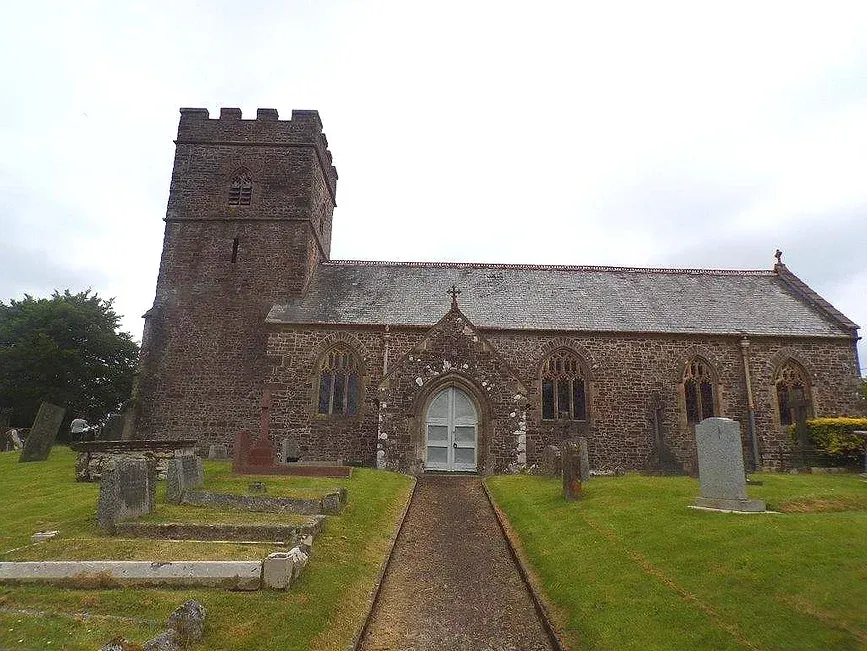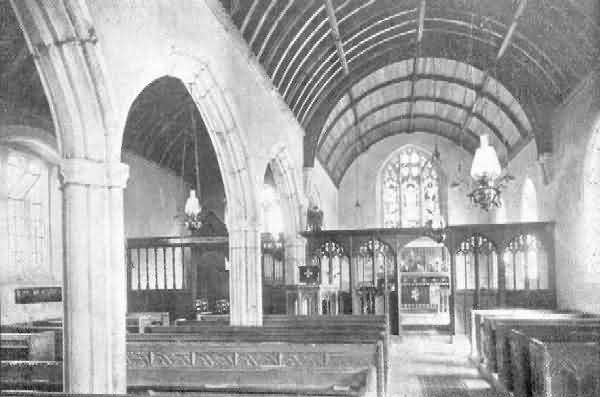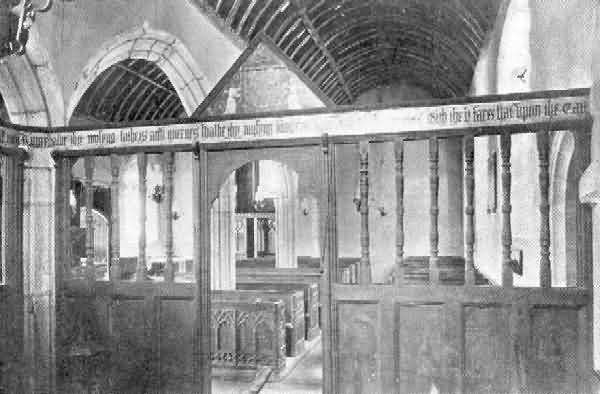St Peter's Church ⛪

The Edgemoor Group's website is at: https://www.edgemoorparishes.org.uk
The Churchwarden at Rose Ash is
Mrs Caro Hammick (01769 550409)
Currently there are three services a month at St. Peter's.
First Sunday a month at 11.15am Morning praise
Second Sunday a month at 4pm BCP evening prayer
Third Sunday a month at 8.30am Holy Communion
Please be sure of a warm welcome whether you are a newcomer, an occasional visitor or a regular. There is a Youth Group (10 - 16) called "Tabasco" that meets in Bishops Nympton on the 2nd Wednesday of every month for supper, worship and Bible Study. It comprises young people from across the group and new members and parents are welcome.
Special Event October 15th 2023
On October 15th, 2023, Andrew Jones will be giving a talk on the history of Rose Ash Church, Rose Ash and the surrounding area. This promises to be a fascinating evening and of interest to all in the area. There will be wine and nibbles available and the event will be free; however, donations will be gratefully accepted.
Church restoration projects
St Peter’s is a lovely example of a classic Devon church with a four-square tower. Dating from the 15th century, it was substantially rebuilt in the late 19th century, having been allowed to slide into a semi-ruinous state by the then Rectors of Rose Ash, the Southcomb family. In one comment, Rose Ash Church is described as being one of the worst examples of a neglected parish church, with parts of it having collapsed and become unusable as a result.
The Southcombs redeemed themselves (and their reputation) by paying for a substantial amount of work that was carried out between 1888 and 1892. Unlike some other churches where the Victorian zeal for “correcting” the errors of the past resulted in rather heavy and somewhat boring interiors, the work at Rose Ash was sensitively carried out.
The gables
By the end of the 20th century, the church was again in need of a bit of TLC. The result was a restoration project funded in part by the lottery, as well as local subscription. Part of the project included replacing the coping-stones on the gables. Although the original stonework had been a Doulting limestone, an Orange Guiting limestone was used in the restoration work.
Sadly, the Guiting started to fail badly after only some ten years, partly as a result of the way the stone was cut, and also the weather up here at Rose Ash. By 2015, the situation had deteriorated to the point that large chunks of stone were falling from the gables, together with bits of the concrete cladding that had been used as a temporary weatherproofing “fix”. (This was somewhat disappointing as the predicted life of this sort of stone was supposed to be in the order of 300 – 400 years!)
The time had come to either close the church, or face the costs of re-doing the gables. Initial inquiries confirmed we were unlikely to get any sensible help from the prime-contractor responsible for carrying out the recent restoration work, so we had to look at grants to help cover the costs. To that end, we have applied to several charitable trusts and funds and are hoping for some positive news by the end of this year (2023).
The bells
Rose Ash has a good peal of bells, most of which are now almost 300 years old. However, the mechanism used to support and ring the bells is now a bit worn out and, by some accounts, at the end of its life. In addition, the bells should be turned so that the clappers do not wear a hole in the side of the bells themselves!
All this means we will have to remove the bells, and then replace much of the structure and mechanism in the bell chamber, although the oak-frame, made by Harry Stokes of Woodbury back in the 19th century, will be retained – albeit with steel strengthening.
Once again, this project has to be paid for by some means, and we are putting together appeals and applications for grants from local and national trusts.
Local support
In most cases, grants of funds are made more likely if we can show local support for the fundraising. Assessors of applications will inquire how we are doing in this respect, and so we need to ask anyone who reads this if they would be able to support our church.
The choice is very simple. We either work together to save this bit of Devon history, or we pass by and let it go. We believe that the overwhelming majority of people still value local churches very highly and would want to do whatever they can to help.
Please do get in contact with us if you would like to help. This might be in the form of a contribution, or offering to run an event to raise funds. No contribution is too small!
You can contact Caro Hammick, the Churchwarden, on 01769 550409.
From Some Old Devon Churches
Between 1908 and 1916, John Stabb, an ecclesiologist and photographer who lived in Torquay, published three volumes of Some Old Devon Churches and one of Devon Church Antiquities. A projected second volume of the latter, regarded by Stabb himself as a complement to the former, did not materialize because of his untimely death on August 2nd 1917, aged 52. Collectively, Stabb's four volumes present descriptions of 261 Devon churches and their antiquities.
ROSE ASH. St. Peter. The church [plate 195a] consists of chancel, nave, north aisle separated from the nave by three arches, south porch, and west tower with five bells. The church is dedicated to St. Peter, but it seems probable, as the old church revel is held on St. James' Day [July 25th], that the original dedication was to the latter saint.
In 1888 the building was found to be unsafe, and the church, with the exception of the tower and the north west wall, was entirely rebuilt. The chancel is separated from the nave by a Perpendicular screen of plain character, the groining and cornice are gone, but the lower panels are good and contain rich tracery. The lights are short, and wide for the height, with thick central mullions. Before the restoration there was an old "tympanum" filling the space over the screen and bearing a painting of 18th century date with a symbolic device of the Eye of God in the centre with issuing rays.
The north aisle continuation of the screen was replaced in Jacobean times [ca. 1603-1625] by a screen of interesting character, consisting of light balustrades, the lower panels having shallow carvings. The parclose screen [plate 195b] is of the same date as the north aisle screen and of the same design. The frieze of both screens has a series of painted texts. On the north side of the parclose screen and the east side of the aisle screen are the texts:- "I exhort that first of all supplications, prayers, intercessions, and giving of thanks be made for all men, for kinges and all thinhs that are in authoritie." "Kinges shall be thy nursing fathers and queenes shall be thy nursing mothers; they shall fall before thee with their faces flat upon the earth." Over the text on the aisle screen is a board with arms of Anne of Denmark, Queen of James I [r. 1603-1625], and over the parclose text are the badge and motto of the Prince of Wales; on the south side of the same board is the inscription:- "Pray continually in all good things, and give thanks, for this is the will of god in Christ Jesus toward you."
On the frieze is the text:- "Quench not the spirit, examine all Thinges holde fast that which is good, Abstayne from all appearance of evil. On the west side of the north aisle screen is the date "1618, iv, I.M." and on the frieze the text:- "Give the king the Judgements O god, and thy righteousness unto the kinges sonne. Then shall bee Judge the people according unto right." The triangular board over bears the arms of George I [r. 1714-1727].
There is a piscina in the chancel; the altar rails probably date from the time of Queen Anne [1702-1714]. The pulpit was erected in 1893 in memory of Rev. Edmund Southcomb, rector of the parish from 1822 to 1854. The carved bench-ends are modern but very good, they bear the emblems of the Passion; the sponge, nails, hammer, pincers, ladder and cross, the seamless robe, scourge and pillar, crown of thorns, money bag, etc. The chiming apparatus is in memory of J. A. H. Loosemore, who died on October 12th 1902. The belfry screen was given by Harriette Southcomb in 1893.
The floor of the belfry and porch are made from the old tiling of the roof. The five bells have the following inscriptions:- (1st) "Glory to God in the highest." W.E. 1728. (2nd) "Prepare ye the way of the Lord." W.E. 1728. (3rd) "Fear God, Honour the King." W.E. 1728. (4th) "The Lord is at hand." William Evans. Bellfounder 1728; John Dodge and John. W. Tanner. Churchwardens. 1728 (5th) Revd. J. Southcomb Rector. J. T. Day; J. Tanner churwardens 1806. Bilbie of Cullompton, Bellfounder.
The registers date from 1591.


